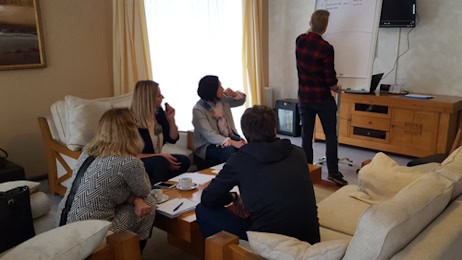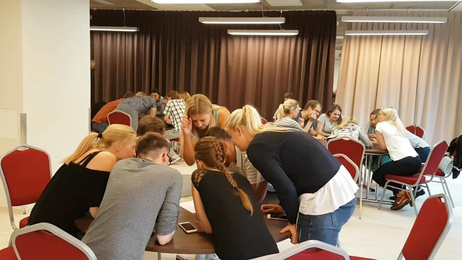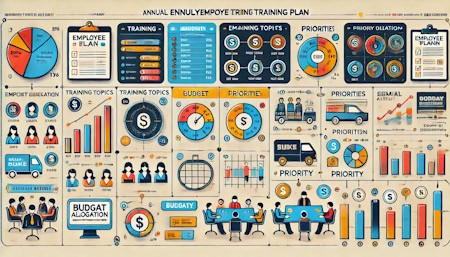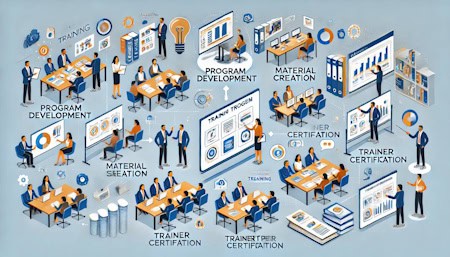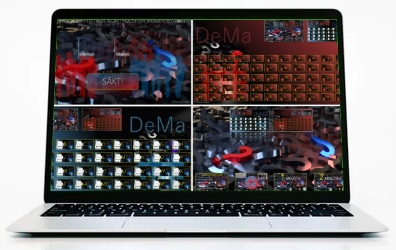SYSTEMATIC APPROACH TO PERSONNEL TRAINING IN THE ORGANIZATION
Professional personnel training plays the role of the "gray cardinal" in 21st-century organizations.
Many turn a blind eye to it, and just as many address it only formally. Today, we must train staff more purposefully, simply, quickly, and practically! If not... training becomes the organization's "Achilles' heel."
WHY PERSONNEL TRAINING?
Unfortunately, I don’t recall the author of the quote, but it went something like this: "If I really wanted to secretly eliminate a competitor from the market, I would arrange for their staff training to be conducted by my person, following my instructions." One of the best gifts we can give our organization's adversaries is weak staff training planning, organization, and implementation—or worse, its complete absence. It’s crucial to remember that staff training has a "multiplier effect"—a good plan, program, and execution create multiple strong employees, while a weak plan, poor program, and stagnant implementation produce numerous weak employees for the organization. Even worse, if such weak training results in the "multiplication" of weak leaders, the consequences can be far more damaging.
WHY NOW?
It’s no secret that formal education is going through a period of low quality, and organizations often have to train new hires internally after they leave the classroom. Another harsh reality is that finding experienced, high-quality personnel in the job market is becoming increasingly difficult. Companies are forced to hire what’s available and train them themselves. On top of that, we live in a rapidly changing environment where constant learning is a necessity. The concept of “stability” essentially no longer exists. An organization either develops or degrades compared to others that are evolving, and in this process, staff training plays a seemingly invisible but highly critical role. Training must deliver better and faster results than what can be gained through everyday experience alone.
WHAT ARE THE INDICATORS?
To understand how well and systematically staff training is organized in an organization, it’s enough to actively listen to company representatives during visits when discussing the implementation of a training program. Below are just a few warning indicators:
- Unfortunately, we don’t really have time for leadership training, so we’ll stick to regular employees.
- There isn’t a specific goal. We have a budget, and we learn something once a quarter.
- I understand, but the team voted for the other format.
- We have a limited budget, and this training group is very demanding. We agreed that two additional coffee breaks are necessary.
Likewise, when evaluating the current training process, the following trends can be observed:
WHAT IS THE SOLUTION?
Staff training must follow a systematic approach that ensures the acquisition of necessary competencies at the right time, place, and quality at all levels. There are four main positions that, depending on the size of the organization, must be taken into account by the personnel organizing the training process. Based on these positions, four training modules have been developed, which can be viewed both separately and as a joint project.
Module A "GETL"
Module B "Development of Complex Programs + Train The Trainer"
Module C "Development and Implementation of the Training"
Module D "Engagement of External Resources"
WHY NAURIS SVIKA?
More than 25 years of experience in adult training at various levels, gained in Germany, the UK, and Latvia. Nauris has not only taught but also trained others to teach, and has developed overall training processes from the idea stage, through budgets, to final results, using various methods and technologies. Nauris is equally proficient in both theoretical and practical sessions in a wide range of environments (from seminar rooms in five-star hotels to a freezing marsh on a late autumn night). Additionally, Nauris has several years of experience leading high-risk training sessions, where a carefully considered process allows for much more effective management of everyday training as well. Since each training method has its own advantages and disadvantages, Nauris regularly combines different methods to achieve the set goal more effectively: interactive lectures, VENU, TDG, case study, LI/LL… coaching, direct and indirect training, LI/LL… In the training process, the focus is on the trainees and the achieved result, not the instructor's ego or desire to be a brighter star in the crowd. As for quality guarantees... Have you ever tried to organize a training process at such a level that the lives of the trainees depend on the outcome? That’s a whole different level, attitude, and result.
